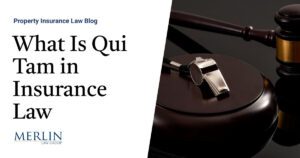Go to Jail, Go Directly to Jail, Do Not Pass Go

Doctor Who Treated Georgia Patients More than 70 hours a Day While he Gambled in Las Vegas Goes to Jail
Medical School Doesn’t Teach How to Defeat the Law of Relativity
Moss was sometimes billing Medicare for services that added up to more than 24 hours a day. He did that on 275 days. And on some days he billed for services that would have taken him more than 70 hours on that day. The services Moss billed on one stellar day would have required him to put in nearly 100 hours in that one 24-hour period.
See the full video at https://rumble.com/v11z23w-go-to-jail-go-directly-to-jail-do-not-pass-go.html?mref=6zof&mrefc=2 and at https://youtu.be/iEge4kFBX2E
 In United States Of America v. Douglas Moss, Nos. 19-14548, 19-14565, United States Court of Appeals, Eleventh Circuit (April 12, 2022) the Eleventh Circuit affirmed the conviction, sentence, restitution and forfeiture of millions taken in Dr. Moss’ crime.
In United States Of America v. Douglas Moss, Nos. 19-14548, 19-14565, United States Court of Appeals, Eleventh Circuit (April 12, 2022) the Eleventh Circuit affirmed the conviction, sentence, restitution and forfeiture of millions taken in Dr. Moss’ crime.
EXPLANATION OF MEDICARE AND MEDICAID SYSTEM
Medicare and Medicaid combined spend $1,500,000,000,000 a year, which is more than one-third of the total health expenditures in this country. Like other government health care programs, these two work on the honor system. Trust and more trust. Both programs take a pay first, ask questions later (if ever) approach. Which leads to crime and more crime, both sooner and later.
A trust-based system is only as good as the people who are trusted. Douglas Moss is one of those who was trusted but not trustworthy. As a physician, he fraudulently billed Medicare and Medicaid for millions of dollars for visits to nursing home patients that he never made.
For his fraudulent conduct, Moss was convicted of conspiracy and substantive health care fraud, sentenced to 97 months imprisonment, ordered to pay restitution of about 2.2 million dollars, and ordered to forfeit around 2.5 million dollars. He, of course, appealed, using the funds he stole to pay lawyers to challenge the convictions, sentence, restitution amount, and forfeiture amount, which is nearly every component of the judgment against him.
FACTUAL BACKGROUND
To explain Moss’ crimes the Eleventh Circuit began its analysis with how Medicare and Medicaid determine how much health care providers will be paid. It explained that Medicare and Medicaid are federally funded health care programs. Medicare pays “claims,” which are requests by a health care provider to be “reimbursed” (paid) for services provided to Medicare recipients. It also contains a code for the procedure or service performed.
The “CPT codes,” which stands for Current Procedural Terminology codes are a national uniform coding structure created for use in billing and overseen by the American Medical Association. They are used by all health insurance companies and by Medicare and Medicaid. A code represents at least two things: the procedure or service performed and the level of complexity involved in it. One type of procedure or service can have more than one CPT code because the same procedure may, in some cases, be more complex than in others. Generally, for any given category of procedure, the more complex the performance, the higher the number used for its code. In turn, a higher CPT code generally gets a higher reimbursement amount from Medicare.
Most of the fraud in this case involves claims for visits to nursing homes. For Medicare to pay a claim several requirements must be met. The service must be provided to a real patient who is properly enrolled as a Medicare beneficiary; it must be provided by a health care provider properly licensed and “enrolled” as a Medicare provider; it must be a service covered by Medicare; and it must be properly documented and billed. The service also must be reasonable and medically necessary. Health care providers sign a “certification statement” agreeing that they will comply with all of those requirements and will not submit false claims.
To properly bill Medicare at the physician’s rate for services provided in a nursing home setting, the physician must be the one in the patient’s room directly providing the service to the patient. When an assistant performs the service, the claim submitted to Medicare must disclose that fact.
THE FRAUD SCHEME
Moss was the medical director and attending physician at four nursing homes. He recruited Shawn Tywon to be his physician’s assistant and, as it turned out, his co-conspirator. Moss had Tywon help with the nursing home patients, and he trained Tywon how to conduct visits with those patients.
Between January 2012 and January 2015 Moss billed 31,714 claims to Medicare for nursing home visits; 477 were coded as 99306, the highest code for “initial nursing facility care.” And 25,468 were coded as 99309, and 5,769 as 99310, which are the two highest codes for “subsequent nursing facility care.” Those numbers suggest a staggering amount of work, a seemingly impossible amount of it. And, as it turned out, that amount of work was impossible.
The claims Moss submitted would have required him to see more than 50 patients a day for 293 of the days in the three-year conspiracy period, and even more than 100 a day on some days and more than 150 a day on other days. Not only that, but based on how long the CPT manual suggested those visits should take, Moss was sometimes billing Medicare for services that added up to more than 24 hours a day. He did that on 275 days. And on some days he billed for services that would have taken him more than 70 hours on that day. The services Moss billed on one stellar day would have required him to put in nearly 100 hours in that one 24-hour period. Moss alone miraculously stretched some of his days to far more than 24 hours. If truthful Moss proved Einstein wrong and was able to stop the running of time and work harder than humanly possible.
MIRACLES OR FRAUD
Of course, Moss’ miracle was non-miraculous, it was old-fashioned fraud.
Moss’ billing revealed he personally had seen 345 Medicare patients and 193 Medicaid patients in Georgia. Those two sets of claims are outstanding in the field of Moss’ fraudulent claims because, instead of being in Georgia treating patients on those dates, as he claimed, Moss had been in Las Vegas gambling.
In addition to submitting claims that were fraudulent because he had not performed the services that he had billed in his name and at his rate, he submitted claims that were fraudulent in another way. He also submitted claims that were fraudulent because – whoever he claimed had performed them – they were for services that were medically unnecessary or did not involve the level of complexity indicated by the CPT codes that Moss put on those claims.
Tywon, medical assistant, testified that “probably for 95 percent of the time or more” when he himself had visited a patient, “there was nothing to do.” Instead, what he would do is walk into the patient’s room, ask if everything was okay, and because a “majority of the time” the patient said he didn’t need anything, Tywon would then leave. He usually did not do a physical examination, take blood pressure, or check the patient’s pulse. As Tywon stipulated in his plea agreement, he would just “lay eyes” on the patients, spending only “3 to 5 minutes with” them during visits, except for in the uncommon event that they had some actual medical need. According to him, there was no medical purpose for most of the visits and he did not think he had any reason to be making them. Moss had him make the visit anyway and bill it at the highest code solely because Moss wanted to increase his payments from Medicare, which he did. In that way, Moss added another layer of fraud on top of billing in his name instead of Tywon’s name; he also billed for any services that were provided as if they were far more complex and time consuming than they actually were.
Moss went to trial. After a seven-day trial, a jury found him guilty on all counts.
SENTENCING
Moss’ presentence investigation report recommended a guidelines range of 78 to 97 months. That range was based primarily on a loss of $6,701,163, which was the amount Moss had billed to Medicare and Medicaid; that factor alone caused an 18-level increase to his offense level.
The court sentenced Moss to 97 months imprisonment, the top of the guidelines range. It also ordered him to forfeit $2,507,623.69 and to pay $2,256,861.32 in restitution.
CONVICTION ISSUES
ANALYSIS
The aggregate dollar amount of fraudulent bills submitted to the Government health care program shall constitute prima facie evidence of the amount of the intended loss, i.e., is evidence sufficient to establish the amount of the intended loss, if not rebutted.
Moss intentionally billed in a way that would maximize the money he received from Medicare. As the district court put it: “[W]hile [Moss] may not have expected that Medicare . . . would reimburse him at a rate of 100 percent, it is apparent that he manipulated his billings to maximize his profits. The way Moss “maximized” his profits was by always billing his claims at a rate higher than the one in Medicare’s schedules. By billing more than the scheduled amount, Moss ensured that he always got the full amount Medicare would pay.
RESTITUTION
To no ones surprise, Moss contends that the $2,256,861.32 the district court ordered him to pay in restitution is too much. Under 18 U.S.C. § 3663A(c), [the Mandatory Victims Restitution Act,] a defendant convicted of fraud must pay restitution to victims of the offense. Restitution must be based on the amount of loss actually caused by the defendant’s conduct and reduced by the value of legitimate medical services provided.
When services are not medically necessary, Medicare reimburses at a rate of $0. Because Moss’ estimate failed to embrace, salute, or even nod at medical necessity, the district court did not clearly err in giving it little or no value.
Given Moss’ failure to identify a single properly billed claim, he did not persuade the appellate court that the district court clearly erred.
The Eleventh Circuit admitted that, because Medicare and Medicaid payments are made on the “honor system” it is wide open to fraud perpetrated by health care professionals with no honor. Moss was a provider with no honor. That the scheme succeeded for many years is because the system believes all of the health care professional are honorable and just paid Moss what he asked even when a simple calculation would have shown that that he was billing for 70 hours of service in a single day. Moss made a great deal of dishonest money only to complain that he was not allowed to keep the fruits of his crime and as a kind and professional doctor was now required to practice medicine in the federal gray bar hotel – the federal prison. Hopefully this will deter other doctors from trying to emulate his crime.

(c) 2022 Barry Zalma & ClaimSchool, Inc.
Barry Zalma, Esq., CFE, now limits his practice to service as an insurance consultant specializing in insurance coverage, insurance claims handling, insurance bad faith and insurance fraud almost equally for insurers and policyholders. He practiced law in California for more than 44 years as an insurance coverage and claims handling lawyer and more than 54 years in the insurance business. He is available at http://www.zalma.com and zalma@zalma.com.
Subscribe to Zalma on Insurance at locals.com https://zalmaoninsurance.local.com/subscribe.
Subscribe to Excellence in Claims Handling at https://barryzalma.substack.com/welcome.
Write to Mr. Zalma at zalma@zalma.com; http://www.zalma.com; http://zalma.com/blog; daily articles are published at https://zalma.substack.com. Go to the podcast Zalma On Insurance at https://anchor.fm/barry-zalma; Follow Mr. Zalma on Twitter at https://twitter.com/bzalma; Go to Barry Zalma videos at Rumble.com at https://rumble.com/c/c-262921; Go to Barry Zalma on YouTube- https://www.youtube.com/channel/UCysiZklEtxZsSF9DfC0Expg; Go to the Insurance Claims Library – https://zalma.com/blog/insurance-claims-library/
Like this:
Loading…
Related




